Back in high school, our campus library had a few magazine subscriptions and newspapers available for students to peruse. This part of the library was one of my favourites, I used to go in every 3-4 weeks and check out what new magazine editions were available for the upcoming month. The magazines I enjoyed most reading were the computer magazines and of course the motoring ones – I believe Wheels was the only one our school subscribed to, but I enjoyed reading it nonetheless.
I recall one of the computer magazines that I was reading in around 1997 or so, had an article about a new Toshiba laptop. I can’t recall the magazine title, as there were a few at school; some of them were Aussie mags like Australian Personal Computer, while we would’ve (could’ve?) had some international titles like PC Mag or PC World. Anyway, I can’t remember which magazine it was, but one day I was flicking through and saw a news snippet with an announcement of this peculiar looking laptop, complete with picture. All the aspect ratios of all the componentry of this laptop were to my eyes, incorrect. Why are the sizes of the keys on the keyboard all wrong? The screen dimensions look ill-fitting to the size of the laptop lid. Why is there a mouse pointer on the screen and not on the arm rest / top deck? And there didn’t seem to be any floppy drives, something that was very common with laptops back in those days.
Please note: this is a rambling journal of my trials and tribulations with getting this 100CT at a point that I would enjoy the most out of this machine. The photos I’ve taken here are on different days, so lighting, positioning etc are not in continuity. And now back to the blog post…
That’s when I saw in the photo, a can of Coke sitting next to the machine. It dawned on me – this machine is tiny! The top edge of the laptop screen / lid barely met up with the top lip of the soft drink can. I was intrigued! Reading on in the article, I learnt that this machine was a Toshiba Libretto, and was a new model that had just come out of Japan. Now we all know that Japan is renown for making incredibly compact devices packed full of power, but this is on another level. There were further mentions that this thing ran a full desktop version of Windows 95, and given the right adapters / expansion cards / docking station, can become quite the capable machine. It’s no desktop replacement, but its power came from the fact it’s literally pocket-sized.
I really wish I did remember which magazine I first learned of the Toshiba Libretto. I have been struggling for weeks to find any clues as to where I could find a scan of this article online, but my search has ended up fruitless. Who knows, this article may be updated in future with the missing piece in this nostalgic puzzle.
Anyway, I digress. I had always admired the Toshiba Libretto, but had no real urge to seek one out and purchase it. Until late March in 2018, where I stumbled across an auction for a Toshiba Libretto 100CT, complete with full docking station, power adapter and driver disks, for cheap. I couldn’t pass up on the offer.
This Toshiba 100CT comes with a 166MHz Intel Pentium MMX CPU, 32MB of on-board memory, 2.1GB IDE hard drive and a 7.1 inch TFT display, capable of a native resolution of 800 x 480 pixels. When I received the machine, it had a rather tired battery, some marks here and there on the case, some bits of plastic missing (nothing major), some burnt CDs that contained what I assumed were some driver disks and possibly set up software (despite no CD ROM drive), and the hard drive would struggle to load up Windows 98 with all the bells and whistles installed by the previous owner. It also came with a curious power adapter that, after the transformer / power supply brick, had a cable that terminated in a 12V automotive power DC socket, and then a separate plug that connects in that socket, which terminated to the Toshiba Libretto proprietary DC jack that plugs into the back of the machine.
Receiving the machine in the mail, I powered it up, and took the obligatory Toshiba-Libretto-next-to-Coke-can photo with my phone:

Toshiba Libretto with a Coca Cola can sitting next to it
… took it home, and promptly put it on the pile of other retro computers I own but don’t have time to restore/fix/boot up and enjoy.
So now it’s 2020, and COVID-19 has really hit the world population really hard. Restrictions are in place in Australia (just like much of the rest of the world), and my workplace has the fortune to be in the position to move all of our work to a WFH situation. This cuts down my daily commute into Melbourne’s CBD from 2.5 hours each weekday, to just a couple of minutes as I work out of my study / home office. Among the many benefits of switching to this kind of working environment, I now have a bit more time to tinker with the ever-growing retrocomputing project pile, and so I decided to get cracking on this Toshiba Libretto 100CT.
Powering it up in 2020 revealed that it more or less still worked, but unfortunately something had happened to the included full-sized dock – it wouldn’t power up, which meant the dock was not recognised by the Libretto. This was really bad news, because the dock that came with this Libretto is not a common one. It includes 2 extra PCMCIA slots, extra ports on the back that the base Libretto lacked, and a single USB 1.1 port. Using this machine in this day and age, you really do need that single USB port for hooking up a usable mouse (the trackpoint on the Libretto is terrible to use), or a USB drive to transfer data over, since there was no floppy drive included with this auction. Connecting the power cable to the dock while the Libretto was connected to it, also did not charge the Libretto (it used to do this before, back when I first got the machine in 2018). If anyone has a Toshiba Libretto dock they want to send over to me, drop me a line! The part number is PA2719U.
The other thing to note with machines this old is the condition of the battery. Not the battery that powers the machine, but the CMOS battery that holds the date and time, and some other basic settings of the machine. These, like many other rechargeable coin cell batteries of this era, are prone to leaking, slowly oozing its internal chemicals onto the motherboard of the machine, etching away traces on the PCB with the potential of causing irreparable damage. So the first port of call was to open the machine up, yank out that battery pronto, and look for a replacement (part number P71007006043). This involved removing the battery, unscrewing all the case screws on the underside of the machine, removing the heat shield and keyboard, and carefully prying apart the top and bottom cases – you have to remember that this machine is now over 20 years old, the plastic is very brittle. Removing the battery and splitting the green plastic wrapping open, the battery showed some crystals forming on both sides of the battery, so I got this little nugget of evil out just in time. After swapping in a new battery, all was well.
The next thing to tackle was the hard drive. Many Libretto afficionados recommend swapping out the spinning hard drive with a solid state drive solution. I went down the route of a CompactFlash card with a CF to IDE adapter that I had lying around – these can be had for very cheap on eBay. Around this time I had acquired a Sony PCMCIA floppy disk drive (model number FA-P1) which I had read was compatible with the Libretto. The Libretto out of the box comes with a PCMCIA floppy drive, but my example came without. Using the machine was difficult without any form of removable media, and I figured that since PCMCIA floppy drives weren’t prolific back in the 90s, that Toshiba might’ve implemented something proprietary (perhaps not in fault of their own; I doubt there was any PCMCIA floppy drive standard to adhere to). Libretto parts are hard to come by in 2020, let alone finding a PCMCIA floppy drive, but I did find the Sony and it worked straight away with the Libretto. You can even boot with it, and it will appear to the machine as drive letter A: — DOS and Windows are none the wiser. Many people say drivers are not required, but as you’ll read below, this is not entirely the case.
Getting the CF card prepped was another procedure plagued with flaming hoops and juggling balls. I had stupidly relied on my 2012 iMac running macOS Mojave to format my CF card via an old USB CF card reader (making sure to format as FAT) and transferring the WIN98 install files over into a directory so I can do an install without media. This turned out horribly — I didn’t know at the time, but exFAT and FAT32 are not the same thing, and the Windows 98 install was interrupted by blue screens. I had to rely on my Lenovo ThinkPad T430s running Windows 7 and an IBM USB floppy drive, to create a Windows 98 boot floppy via a disk image I had downloaded from bootdisk.com, connect the CF card to the Libretto, boot up via floppy and FDISK and FORMAT C: /S /U the old fashioned way. I was thankful that this worked; the IBM USB floppy drive does not work most of the time with my range of USB-capable modern computers such as my macOS Mojave-running iMac, or the T430s when running its default operating system of Ubuntu 16.04 MATE. Windows 7 saved the day here for me.
Physically connecting the CF adapter to the Libretto IDE port was again another hassle that I had to overcome. This particular adapter had rather long and sharp leads / legs from the IDE port, which made the adapter a millimetre or so taller than it needed to be, to connect properly with the Libretto’s IDE port. It also had all 44 pins (2.5″ IDE ports have 44 pins instead of 40 in its desktop form) while the Toshiba has pin 20 missing in its IDE header socket. So not only did I have to trim the underside of the adapter using a pair of sidecutters (I did this in a zip-lock bag to keep the chaff all contained), but I had to trim off pin 20 as well so that I could physically connect the adapter. Having done all that though, and connecting the CF card, booting via the Windows 98 floppy showed the drive as available in FDISK, so it did work! The adapter was plugged in snuggly enough to not get loose, and there already was some insulating tape material on the motherboard so I decided to not apply any more padding or insulation to the CF card – the tolerances were already razor thin. Using a CF card instead of a spinning hard drive has huge benefits regarding battery life; there are however a couple of downsides: the hard drive activity LED no longer lights up, and if I need to get the drive out, I will have to disassemble the machine again. The stock spinning hard drive from Toshiba is large enough to reach the edge of the case, and has a small bracket screwed to it that acts as a handle to pull the drive out of the computer without too much disassembly.
So with all that out of the way, I successfully installed a base installation of Windows 98 Second Edition!
So by successful, I really mean partially successful. For those who remember installing Windows 98 back in the day, whenever you do a fresh install, an operating system upgrade, or install a new component to your computer, you gotta right click on My Computer, and go to System Properties / Device Manager to look for unknown devices or those whose drivers did not install properly. And lo and behold, the PCMCIA floppy drive that’s supposed to be plug-and-play… wasn’t. I quickly found some drivers by googling ‘Y-E Data PCMCIA floppy driver’ and whacking that on a floppy, and rebooting the Libretto into MS-DOS mode (by pressing F8). It seemed that in MS-DOS mode, the PCMCIA floppy drive was working fine, it was just in Windows that it would break. Copying those driver files to the CF hard drive, rebooting into Windows and installing those drivers in Device Manager fixed the problem.
It was at this point that I received my 32-bit CardBus/PCMCIA USB 2.0 card in the mail from China. It turns out I had good luck when I first acquired this Libretto, since older models could not handle 32-bit CardBus, and newer Librettos are not as desirable as they’re not that retro (unless you get a Japanese-only-market model). Getting the drivers from the web and onto a floppy, I plugged in the USB card and Plug-and-Pray did its thing. The card worked great after having its drivers installed, and a plugged in basic Microsoft USB mouse that I had laying around worked great, but the machine blue-screened when plugging in a FAT32-formatted 2GB USB drive – Toshiba branded too, no less. It turned out that I needed to install more drivers to get USB drive capabilities working in Windows 98 – found on the wonderful Raymond.CC website. This is a generic USB mass storage device driver, and was compatible with the Toshiba 2GB USB drive I had, but not compatible with some other unbranded USB drives. No matter, I can work with this.
I still had to install all the other Toshiba Libretto related drivers, including:
- APM to ACPI patch – this is needed for more granular power control in Windows rather than relying on BIOS level management.
- Toshiba Control Software (a set of BIOS utilities and power management tools)
- Power Save Driver for Windows 98
- Video drivers for the NeoMagic NM-2160 video card with 2MB of RAM
It turned out I didn’t need to install sound card drivers, Windows 98 seemed to be well versed with the Yamaha OPL3 SA3 chip the Libretto has on board. The video card drivers were the biggest improvement, as it brought a higher resolution than the default 640 x 480 x 16 colours that Windows 98 falls back on, and I could finally get a full-width 16bit colour desktop. Interestingly, the installed drivers changed my resolution to 800 x 600, but the native display resolution on the 100CT is 800 x 480 – it does render the full 600 pixel height though by panning the display up and down as you move the mouse cursor. I didn’t really like that, so I turned that off by changing my resolution in Display Properties to 800 x 480.
So what next? Time to install some software! I tried to think back to 22 years ago when I had Windows 98 installed on my self-built PC, and recalled a few apps that I had installed way back then – WinZip (unpaid of course), Direct X 9, WS FTP, WinRAR, Office 97, Winamp and the like. I found an extensive list of desired apps at retro.remotecpu.com, but as of writing this blog post, the site is unfortunately offline. Anyway, I had grabbed a copy of those install files, and transferred everything over. It was at this point that Windows 98 started to flake a little, blue-screening when copying over the Office 97 ISO image that I had to mount virtually to get the install going. A quick Buy-It-Now purchase on eBay and a few days’ delivery wait later, I had an SD-to-Compact Flash adapter in my hands, and this coupled with the CF-to-PCMCIA adapter that I use for my Amiga 1200, made a more reliable way of transferring files over to the Libretto.
This blog post has just past 2700 words now, so I might draw a line here and do a part 2 – there’s still more to do for this Libretto! I’ve been working on this machine on and off after work for the past month + a few days, so stay tuned for a second instalment sometime soon.
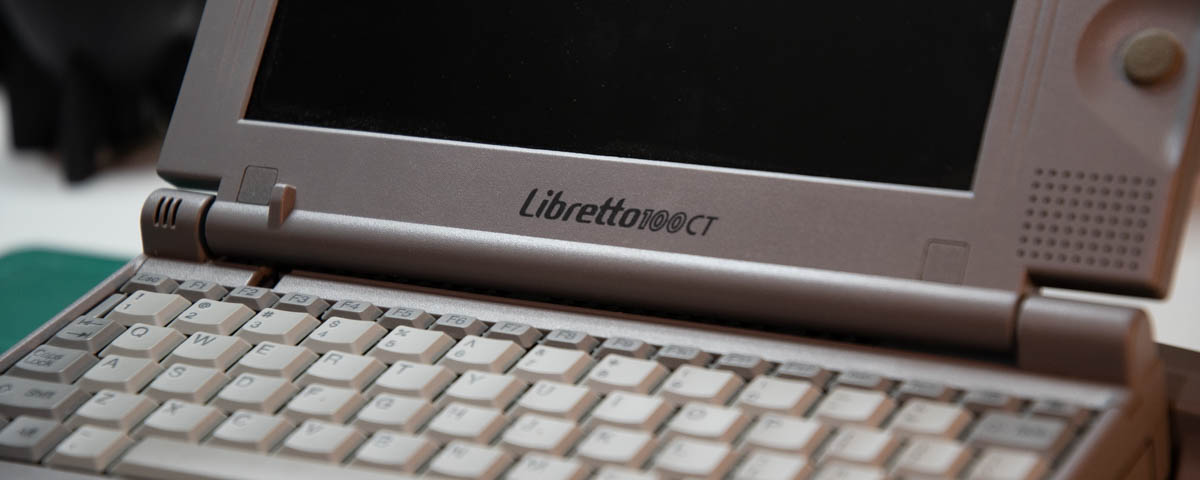
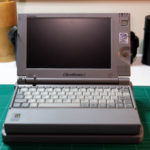
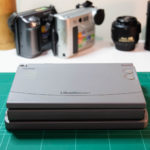
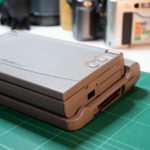

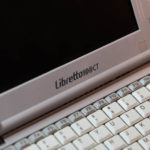
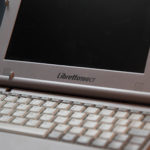
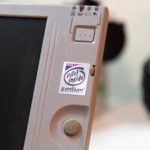
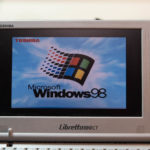
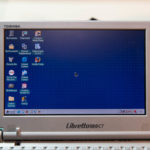
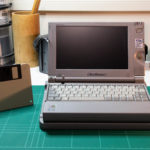
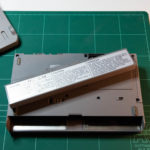

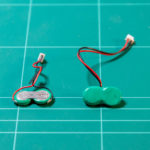
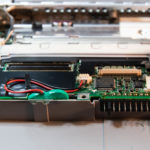


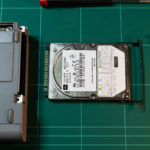
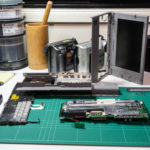
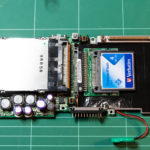
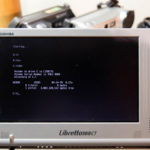
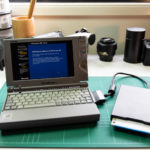
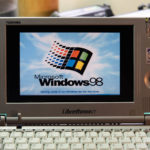
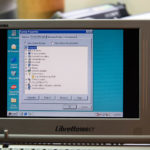
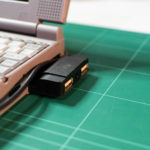
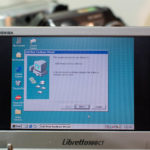
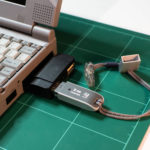
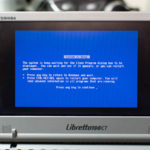
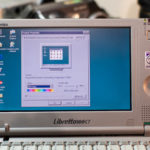
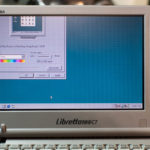

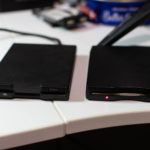

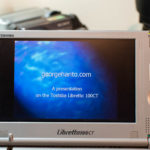
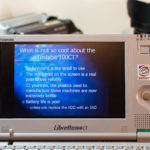

Angel says:
Hi!
This week I remenbered I had two Toshiba Libretto 100 CT in my storage room and today I have found this post, it’s a signal! ;-)I has been very nice finding this post because all the info about Libretto I had found until now is quite old. I tell you what I have:
One of the Libretto has Windows 95, the other Windows 98. I have also some periphericals with PCMCIA: floppy disk, modem and ethernet adapter, Wireless card and also a docking station, but only one power supply.
Yesterday I tried unsucessfully to connect the one with Windows 98 to my wireless network but it’s due to lack of WPA protocol on it. Connecting with the ethernet card neither works, I don’t know exactly what is missing in the configuration but it doesn’t works, I have to retry it next time I have some free time…
I’ve been checking PCMCIA adapters to connect USB or SD cards but I have doubts about compatibility, can you put the links to get ones like yours? Many thanks!
November 6, 2020 — 9:02 am
Clive says:
I’m having problems getting any LAN or Wireless cards to work on my 100CT – I’ve got a bunch of cards here but cannot find drivers anywhere. If anyone can recommend a card that works (either wired or wireless) and can also point me to the driver for it, I’d really appreciate it!
December 19, 2020 — 10:14 pm
mak_xxl says:
Hello,
it is amazing: Just in this week i have repaired an 100CT from a customer – the BIOS Battery.
I have used in the past two units of 100CT in the Years 2001-2005 (ca.), and then well packed for eternity. Now i was pry, firefox was starting – and now i’m here and have read! Very interesting to see, i’m not alone in the world with my opinion …
@clive: I had on the 100CT an installation of windows 2000 (SP4) – runs very stable. As LAN-Cards i had used Xircom ‘R2BE-100’. Later i used this Card(s) on an Toshiba T8100 with Windows XP.
Xircom-Card are available on eBay (from time to time). Drivers available here ‘http://driver.soft32download.com/Network/Xircom/1-1.html’ – if not, give me a sign per email, i will send them.
Happy days @all – Greetings from the Isle of Rugia (Germany)
May 7, 2021 — 4:20 am
Peter Bridger says:
I enjoyed reading about your nostalgic journey with your Libretto. I just can’t get enough of this little gem! :)
I picked one up myself a few years ago as a real fluke. I bid on it on eBay without really knowing what I was bidding on. So when I received it and started to unpick it’s history, I was really fascinated.
Like yourself I replaced the spinning disk with a CompactFlash. I also overclocked mine from the stock 166MHz to 233Mhz (https://www.strifestreams.com/post/186719040530/the-libretto-range-from-toshiba-are-a-fantastic)
As you say the port replicators are like gold dust, so like yourself I used a PCMCIA card to add USB ports which allow for easy transfer using a USB stick.
I did have an issue recently where the keyboard failed and I was unable to startup, but thankfully I was able to source a replacement https://www.strifestreams.com/post/647518166878142464/my-toshiba-libretto-100ct-is-a-great-little-retro
So as of writing this comment, the little beauty is still providing me with lots of retro gaming joy
June 22, 2021 — 1:29 am